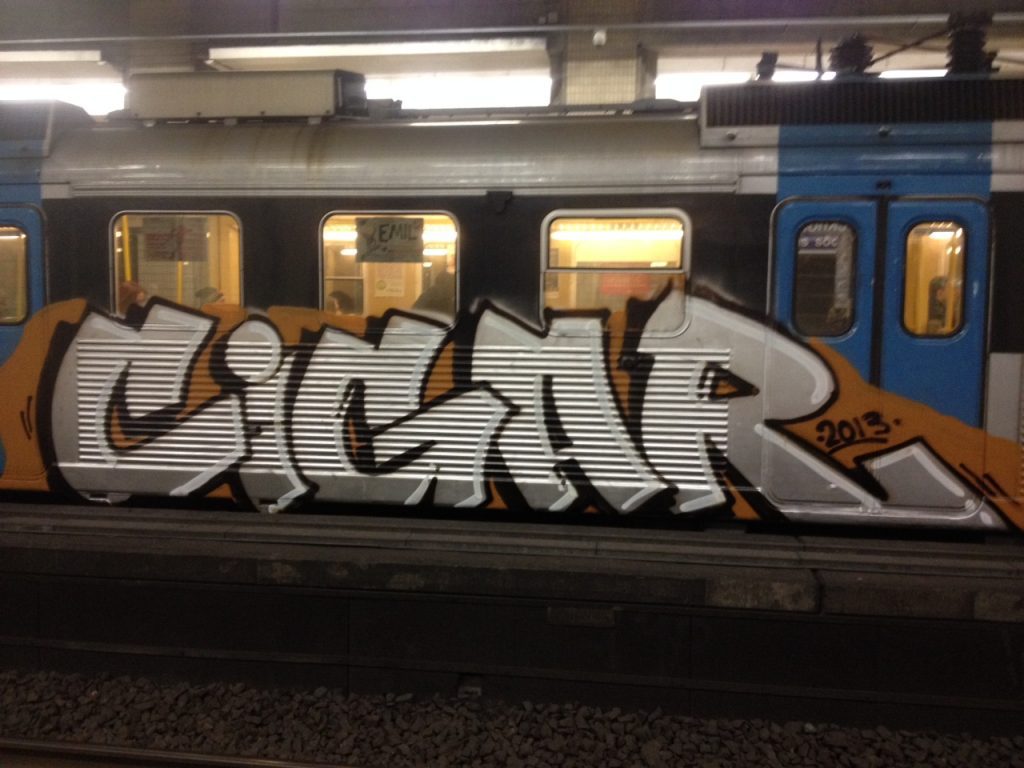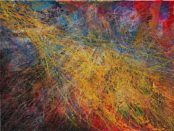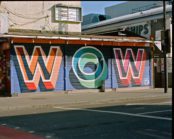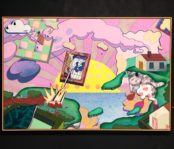[dropcap style=”font-size:100px; color:#992211;”]C[/dropcap]ities are mentally noisy places and the vast amount of input we receive walking through them would be overwhelming if we couldn’t tune out the ephemeral.
We walk past the homeless, gloss over billboards; often we barely register other people as anything more than obstacles in the maps of our daily travels. These routes contain a layering of information (busiest in the mornings), strategies (north side of the street), histories (fell down here), primary (getting to work) and secondary actions (getting a coffee). The countless minor journeys that make up our movement through the world are all considered and revised applications of revealing rational and creative choices. We notice the things that shift us out of autopilot and into the noisy active life, and more often than not it makes us grumpy when it happens. These mental maps define the borders of what we expect to be predictable versus everything else.
Psychogeography and flâneurism are philosophical terms for the standard dinner party conversation about how we got there and what route we took. Why they occur at dinner parties is that people are discussing a map that is new to them. They haven’t validated the best route and so go about seeking shared knowledge, with a touch of interpersonal judgement and status-checking for good measure. It might be that that humble and perfunctory ice-breaking conversation has its roots in a more ancient conversation where those maps were essential for hunter-gatherer survival. Of course knowing that the toilets at a popular service station are broken could be equally critical if you have kids or a gluttonous partner. Shared travel information is an integral part of community building amongst co-located groups. Establishing trust, beneficence and rapport it answers symbolically and factually the question ‘How did we get here?’ and puts at ease the other questions ‘Where do we go from here?’, ‘What sort of people am I here with?’ and ‘Will I be stuck talking to Victor about van Gennep all night?’
By looking at the process whereby a new journey becomes a regular journey and what has to happen for a regular commute to become new again we can understand how strategy and motivation moulds actions which with repetition become behaviours. Behaviours shape and are shaped by social conceptions of how we should go about doing the things we want to do.
As a sociologist Erik Hannerz works to understand how these questions are asked and what role location plays in this discussion. It might be that the founding premise of anthropology is to understand why humans have common types of behaviour in different locations and differing types of behaviour in common locations, not to mention why people do anything anyway!
Earning his PhD in sociology from Uppsala University, Hannerz has focussed predominantly on the topic of subcultural authenticity. In his thesis Performing Punk (revised and published in 2015) he investigated the ordering and structuring of style and behaviour among punks in Sweden and Indonesia, pointing to how the subculture centred on plural definitions of punk .
Currently Assistant Professor of Sociology at Lund University and a faculty fellow at the Center for Cultural Sociology, Yale, Hannerz’s work on graffiti artists examines how what has been characterised as an antisocial element within Swedish society is in fact highly social. For a number of years he has interviewed and joined groups of graffiti artists as they traverse cities, witnessing how they use and update their models of the urban environment in order to create their art without detection and to bond together as a group. Truly art in time and space.
—
“My previous work has been on subcultural theory, mainly on how punks negotiate not only space, but meaning, style and identities, and especially in terms of how subcultural authenticities are negotiated and played out differently within the same subculture.
the kids are so good at making up these rules based on the limits you have
So the case of Sweden and Indonesia was to confront traditional subculture theory that argued that cultures arise because of experiencing social injustices with relation to a dominant culture. The idea was that if this is so, we would see clear differences, and what I was able to show was the relative autonomy of the subcultural in the sense that the Swedish punks and Indonesian punks negotiated their identities in similar ways, based on what they thought that punk should be and especially what they should be against.
The contrastive aspect of subcultures being against something and turning the tables on the normal and the deviant is something positive, just from the point of view of creativity.
It’s the same in the sense of when you play a game with kids, the kids are so good at making up these rules based on the limits you have. We don’t have these things, so let’s play it with these limits. Subcultures are similar: we only have three chords, we only have two different drumbeats, and we’re only allowed to sing a certain way. Out of this, you can make this incredible variety of music and styles. It’s the same with graffiti in that the way of doing graffiti has looked the same for the last four decades, but still they’re able to come up with new ways of doing the same things, because how the limits are viewed changed over time. I find that interesting in terms of how creativity is based on different kinds of limitations.
This means it’s much more complicated than if we say provide legal walls
The overarching conclusion [of my work] would be that the previous research on graffiti, and that also includes the public discourse on graffiti, has focused on binary distinctions between the legal and illegal, or, if you prefer it, vandalism versus art. This is connected to the youths who do vandalism, and as they grow up into the subculture it may eventually turn more into art. What I show in my work is that this is not only not empirically true, but instead graffiti is structured spatially and also temporally. So instead of saying this is a matter of either/or legal, it’s more of a matter of where it’s played out. Then these spatial differences have consequences for how graffiti is done, where it’s done, but also why it’s done. This means it’s much more complicated than if we say provide legal walls, illegal graffiti will go away, or if we just condemn the illegal writers to harsher punishments, they will choose to do the legal side. I show how these spatial aspects of this movement they’re engaged in provide an entirely different urban place. Returning to the analogy of kids playing their own games and constructing their own rules, they construct different playgrounds with different rules depending on where it’s played out. Trains, for example, constitute an entirely different playground than the streets or an abandoned building. The main conclusion is that in order to understand the rules and also the outcome of the play, we have to understand the playground and how it’s spatially constructed.
Continued in print. Read more in Trebuchet 6 – Time and Space

The aim of art is to represent not the outward appearance of things, but their inward significance. – Aristotle





















